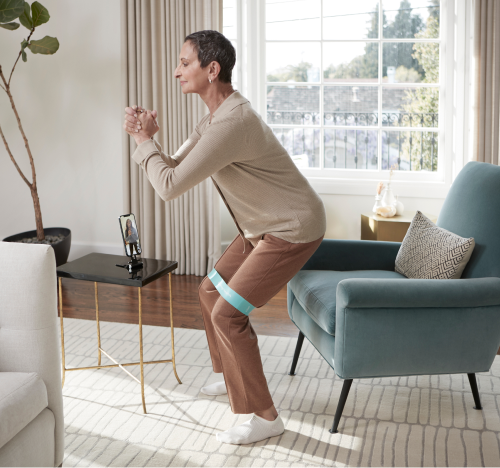Virtual pelvic floor therapy on your time
Reduce pelvic pain and discomfort — at no additional cost to you — with exercise sessions you can do at home in 15 minutes or less.
Hinge Health is available to over 1,700 companies and benefit plans!
Pelvic floor issues are common, but they shouldn’t be your norm
One in four women has a pelvic floor disorder¹. Yet many are told that their symptoms are nothing to worry about — even if those symptoms are embarrassing, disruptive, or painful.
Find relief with treatment tailored to you
Pelvic floor disorders can happen at any age — and they’re different for everyone. With Hinge Health, you’ll get a personalized care plan that addresses your unique symptoms and life stage.
What to expect with pelvic floor therapy from Hinge Health
Get a personalized plan with guided exercises that address your unique symptoms.
Complete these exercises in 15 minutes or less. Try starting with three sessions per week.
Do them anytime, anywhere. No waiting rooms — just results!
What to expect with pelvic floor therapy from Hinge Health
Get a personalized plan with guided exercises that address your unique symptoms.
Complete these exercises in 15 minutes or less. Try starting with three sessions per week.
Do them anytime, anywhere. No waiting rooms — just results!
Getting started is easy
Limit leaks with a pelvic trainer
Limit leaks with a pelvic trainer
What members say about our women's pelvic health program
My Hinge Health PT was the first person to tell me what caused this.
Margaret
Hinge Health member

